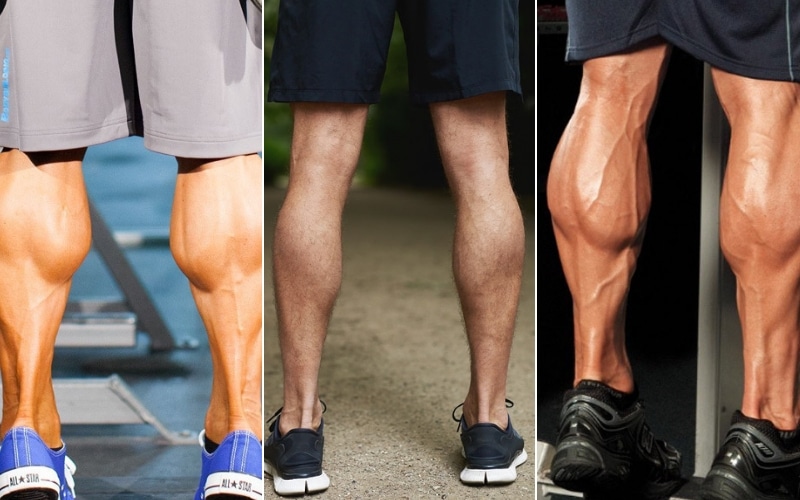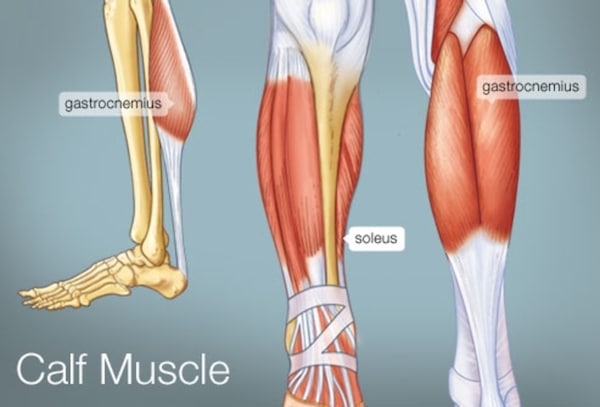No products in the cart.
Learn How to Get Bigger Calves : Tips to Bulk Up Your Calf Muscles

Do you suffer from calf envy? Not everyone is lucky enough to be born with large calf muscles. Therefore when you see those lucky few who have perfect calves without having to do any additional leg work, it can be really frustrating.
However, it isn’t always down to genetics why you might not currently be sporting perfectly shaped calves.
A lot of the time it is actually down to a lack of focus on that particular muscle group.
Calf muscles are often considered more of an afterthought when it comes to working out.
Even if you weren’t born with genetically perfect calves, there are still ways you can build them up.
If you are looking for strong legs, you’ve come to the right place.
Let’s take a closer look at the calf muscles and get some tips on how you can bulk them up for the best results.[toc]
Exploring The Calves

The soleus is influential and persuasive in the calf complex on account of its size and obligation.
Biomechanics could be changed drastically when the soleus muscle is injured.
Muscles are intended to make and keep up structural integrity in the body, particularly those in the legs.
Quality, length, tone, adaptability, and hydration are all imperative in keeping the muscles healthy.
If you are a long-distance competitor or walker, your soleus will play a greater amount of impact than the gastroc in light of the fact that there is normally no vertical hopping included.
Track runners, ballplayers and different competitors that sprint on their toes or jump vertically have a tendency to initiate both the soleus and gastroc similarly.
All the muscles inside the calf associate in the foot. Quality and strength in the foot and lower leg might be traded off once these muscles lose their flexibility.
The way that the muscles are structured affects the adaptability and flexibility inside these muscles, making them follow together and causing them to be more sensitive than dynamic.
The flexors, digitorum longus, and hallucis, which are the alternate muscles in this part of the body, connect in the base of the foot, around the middle of the foot.
When they begin to lose their adaptability and quality, the stability in the foot is going to be traded off, constraining the calf area to work that much harder to balance out the foot throughout a walking or running stride.
The leg muscle’s principal obligation is to control the foot through development. In the long run, the muscles will lose their capability to perform because of adjusted weight dispersion and the lack of stability in the foot.
How to Train Your Calves?
A few muscles could be trained adequately through short bits of training. Yet the calves are not typical muscles.
We utilise the calf muscles a considerable amount in everyday movement and they are accustomed to moving the weight of your body around all day, every day.
It is going to take an unprecedented boost to truly make the calves bulk up in the way that you want them to. It is consequently essential to stress a full extension and a full squat on every rep.
The most ideal approach to train calves is to stop counting how many reps you are doing!
You will want to perform controlled reps until you can’t endure the torment any longer.
Augmenting the set with partials or shaking out your calves to get a couple of more reps is a good way to continue to push yourself and help your calves to develop.
One thing you will notice with calf training is that a lot of people will do it without shoes on.
There are a couple of principle reasons why training with no shoes is better than training with shoes.
Above all else, your hold is better without shoes. At the point when wearing shoes the propensity is to “slip,” because the sole of your shoe can’t get sufficient grip and you will need to keep on correcting your balance all around the set.
Without shoes, you will be able to utilise weights as a part of your calf training without running the risk of hurting your feet in the process.
Also, without shoes, you aren’t restricted to the extended position; so you will show signs of an improved stretch, which implies a more varied reach during your workout.
This, in turn, will help to increase the output of your activities.
Tips for Bigger Calves
You’ll notice your calf muscles are actually one of the hardest to build up. They are annoyingly resistant due to the fact that they are worked every single day.
Think about it, every single time you walk, your calves have to carry your full body weight.
If you are looking to build them up then the following steps will help:
1. Begin Training Your Calves Every Day For 2-4 weeks
Focus on adding 4-6 sets of calf exercises each day. Ideally you should switch it up and focus on a different exercise daily.
If you carry this on for 2-4 weeks before continuing with your usual workout, you should notice a real difference.
2. Focus On Nightly Calf Raises
Before you jump into bed, while standing, focus on hard-squeezing calf raises. Aim to do 100 and do them slowly. It will hurt, but that burn shows they are working.
3. Practice Walking On Your Tiptoes
Ok so you might look a little strange, but walking on your tiptoes will really help to build up those calf muscles.
Look at ballet dancers. They tend to have amazing calves.
You don’t have to walk everywhere on your tiptoes. Just try it around the house every now and again.
4. Stair-Based Calf Raises
When walking up stairs, try and do a calf raise exercise up every step. When you’re walking back down, make sure you are stepping onto the ball, rather than the heel of your foot.
5. Do 2 Varied Weekly Calf Workouts
Focusing on 2 calf workouts a week can help even the most stubborn calf muscles to start working.
One of the workouts should be focused on 4-6 reps using heavy weights. The other should be a lighter workout, focusing on 25-50 reps with really light weights.
6. Go Barefoot
If you do your calf exercises bare-foot, it increases the workout. You will notice your muscles contract more intensely.
Best Exercises for Calves
The following are the best exercises for building monster calves:
#1: Standing Calf Raises
You can either perform this exercise using a dedicated machine or with calf block.
Stand under the machine pads, or use a barbell with the balls of your feet on the calf block.
Start with your heels roughly 2-4 inches below the block and slowly raise up until you are fully stretched. Hold for a second before returning to the start position.
#2: Seated Calf Raise
This is similar to the first suggested exercise. However, the seated variety will focus more on the lower part of the calf (the soleus).
#3: Leg Press Calf Raise
Also known as the Donkey Raise. It can be performed by sitting on the leg press, you should only hold the sled with your toes and the balls of your feet.
Rather than using your hips and knees, you should focus the movement with your ankles.
#4: Box Jumps
A functional exercise that will give your calves more athletism and power.
Stand on the balls of your feet and jump onto a box, then drop back down onto the floor, again on the balls of your feet.
I would highly recommend avoiding using any weights during this exercise. There are plenty of bloopers online of people failing with this exercise.
#5: Dumbbell Jump Squat
Again this will give your calves more explosive power.
You can perform this exercise by holding a dumbbell in each hand. Dropping down as you would a normal squat, but on the upwards stage of the lift, you should explode into a jump.
You should try to land on the balls of your feet and immediately perform another rep.
Don’t Forget About Nutrition
Nutrition is, of course, something else that you have to consider when you’re trying to build up your calf muscles.
You want to make sure that you are ingesting a proper amount of protein so to help your muscles to build up. You also want to make sure that you eat a lot of fats as well.
It sounds strange, but calves bulk up better if you pick up some fat on them first.
It will take time and effort to do this, and you will have to be careful with your diet so you don’t gain too much fat in other areas of the body.
However, in general, this approach works quite well.
In Conclusion
Getting a quality pair of calves that compliment your solid quads and hamstrings will take work over the long term.
That being said, on the off chance that you are ready to invest the energy and exertion, we can guarantee you that your efforts will pay off.
It is important to note that you shouldn’t do all of these steps at the same time! If you try and do everything, you will end up causing more harm than good.
You don’t want to over-train your calves. Just do 2-3 out of the list and be sure to mix it up every 3-4 weeks. Good luck!
Save
